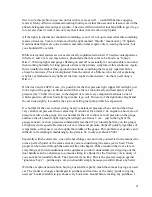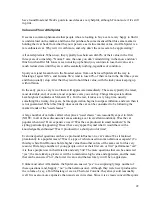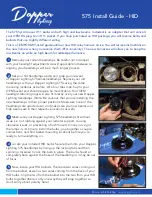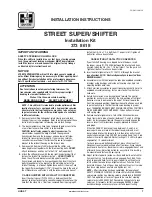
13
In the US, at least, the Series 3 cars were also separated into different trim levels at different
times in the run:
In 1982, you had the Spider 2000 and the Spider Veloce (pronounced vel-OH-chay). The 2000
had steel wheels, vinyl seats and a vinyl top, while the Veloce got alloy wheels, leather seats and
a cloth top.
In 1983 and 1984, there was just the Spider Veloce.
In 1985 the line was split into three models, the Graduate, Veloce, and Quadrifoglio (pronounced
”
kwah-drih-FOH-lee-oh
„
). The Graduate was the "introductory" level of trim, with vinyl seats,
vinyl top, and steel wheels. The Veloce came with leather seats, a cloth top, power windows and
power external rear view mirrors, and very attractive "star" alloy wheels. The Quadrifoglio came
with specially designed leather seats, canvas top, "phone dial" alloy wheels, a/c standard, special
carpeting, a redesigned front spoiler and tacked-on
”
side skirts
„
, and a detachable hard top.
It should be noted that the cars differed only in trim, not in anything important like engine output
or handling goodies. The Graduate was advertised as an "Enthusiast's Car"... i.e. it
“
s got all the
important stuff, but not the gadgets or the plush things. (special thanks to Joel Hailey of
International Auto Parts, John Burrows and Tess McMillan for the advice on trim levels)
Which reminds me... nearly all Alfa Spiders, going back to before the 105/115 Spiders, had hard
tops available. I believe that the hard tops are interchangeable from 72-83, with a redesign in 84,
which are then interchangeable from 84-94. I have been advised that, while the hard tops are
nice, they are also a pain, especially if you live in the warmer climates. It takes two people to
remove one, they are large and difficult to store, and make impulsive decisions to lower the top
impossible (unless you want to leave it on the side of the road). I have been told that it doesn
“
t
seal much better than the folding top, and isn
“
t much quieter. However, it is supposed to make
the car noticeably warmer, and the rear quarter windows of the later configuration substantially
reduce blind spots in these areas.
While the Series 3 cars have often been criticized for their gimmicky looks, it should be noted
that Alfa was just following the trends. You only have to look at the Mustangs, 280 (and 300)
ZXs, and Honda CRXs of the period to see that Alfa wasn't alone in these styling cues. And, as
before, the Series 3 cars were still very recognizably Alfa.
In my own opinion, the production of the 115 Alfa Spider almost certainly should have stopped
before the introduction of the Series 3 car. Alfa already had a very sophisticated chassis with the
116 Series, and a new V-6 engine in the works, neither of which could be easily adapted to the
115 body. Convertibles were coming back into vogue for the first time in over a decade, and the
time was ripe for something spectacular from the Pininfarina design house. However, for
whatever reason, this transition never occurred.
One likely explanation is the circumstances of the automobile market in the early 1970s,
especially that of the US. The automotive marketplace of the US was completely different than it














































